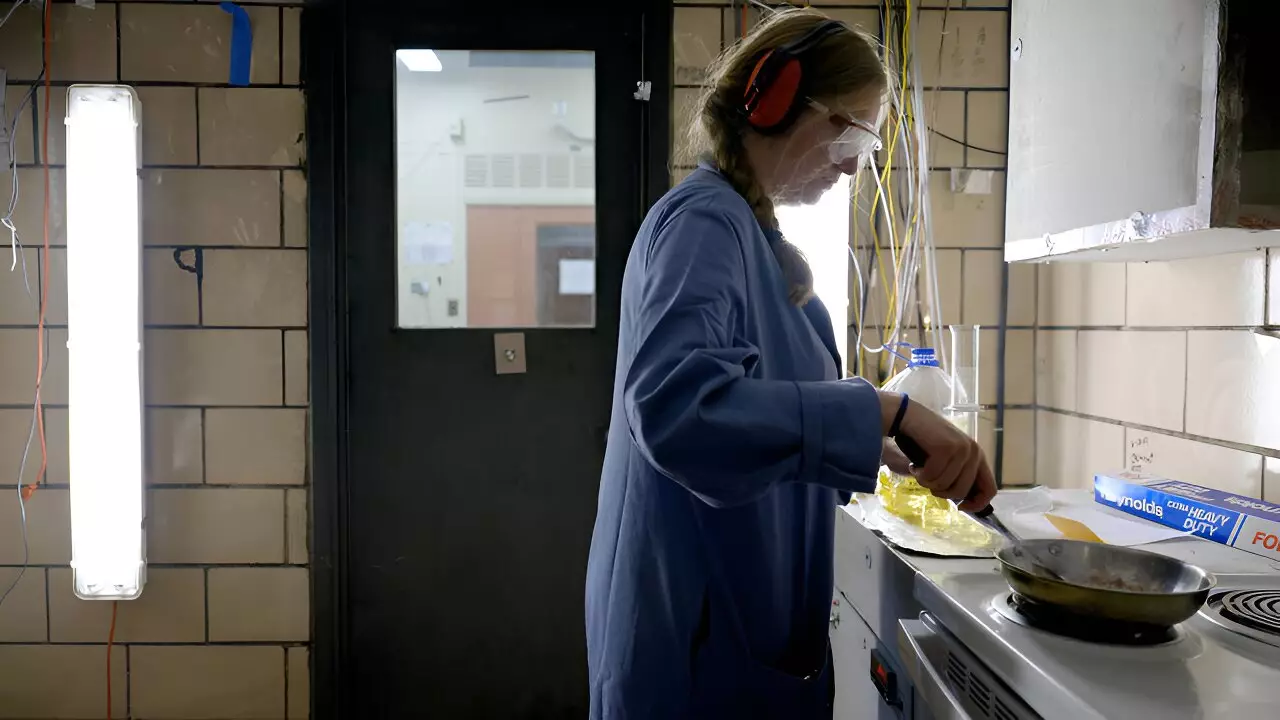In recent years, the evolution of fire detection technology has significantly altered the landscape of home safety. A notable study from the National Institute of Standards and Technology (NIST), led by fire researcher Emma Veley, showcases the ongoing effort to enhance the efficacy of smoke detectors while minimizing the nuisance alarms that plague many households. This careful balance is crucial, as these false alarms can lead to people disabling their smoke detectors, greatly compromising their safety in the event of a real fire.
The foundation of this research involves an in-depth evaluation of how well modern smoke alarms detect actual smoke and flame while avoiding activation from everyday activities like cooking or showering. This performance metric is paramount, as a smoke alarm that frequently malfunctions may lead homeowners to disregard its warnings altogether, especially in environments like kitchens where the odor of burnt toast can often trigger an unwarranted alert.
The Nuisance Alarm Dilemma
Nuisance alarms are a common grievance among fire safety experts and homeowners alike. Amy Mensch, the lead author of the study, emphasizes that repeated false alarms decrease the likelihood of people responding appropriately to a genuine emergency. Such behavior is concerning, given that smoke alarms have statistically halved the risk of death from house fires since their introduction in the 1970s. An effective smoke alarm has proven to be one of the most critical elements in residential fire safety.
In the light of these issues, the fire alarm industry has actively sought to innovate and enhance smoke detection technologies. The upcoming implementation of the eighth edition of UL 217—a set of manufacturing standards aimed at improving smoke alarm performance—marks a significant milestone. For the first time, manufacturers will be held accountable for minimizing nuisance alarms, thereby keeping homes safer while maintaining effective smoke detection capabilities.
One aspect driving the update of smoke alarm standards is the evolution of materials used in modern homes. Today’s upholstered furniture, for instance, often contains synthetic materials like polyurethane foam, which ignites more rapidly compared to the natural fibers prevalent in older furniture. This shift poses challenges for smoke detectors designed and tested with older materials in mind.
The technical committee that developed the new standards recognized these changes and sought to ensure that detectors could effectively respond to a wider array of fire scenarios. This includes enhancing the detection capabilities for both flaming and smoldering fires, without making the alarms so sensitive that they react to innocuous cooking activities or steam from a shower.
Understanding Smoke Alarm Types
Smoke alarms typically fall into two categories—photoelectric and ionization alarms. Each type possesses unique strengths: photoelectric alarms are adept at detecting smoldering fires while ionization alarms excel at detecting flaming fires. Traditionally, homeowners faced a quandary when selecting which type to invest in. However, the new UL 217 standard introduces measures that will promote equivalent functionality across both types, allowing consumers to benefit from better fire detection without the guesswork.
To maintain a balance and avoid amplifying the nuisance alarm issue further, the new standard has introduced a rigorous test for nuisance detection. This involves testing each smoke alarm against specific cooking stimuli, which are designed to mimic the conditions that often trigger false alarms. The results indicate that despite the advancements, newer alarms are still performing on par with their predecessors in terms of nuisance activation during cooking, suggesting that more work is still needed in this arena.
Transitioning to the new smoke alarms will not happen overnight, as manufacturers are permitted to sell their existing stock, and there are no legal repercussions for consumers who choose not to upgrade immediately. It’s anticipated that this shift will take several years before homes are uniformly equipped with the latest safety technology.
In the meantime, enhancing home safety requires some proactive measures. Experts recommend positioning smoke detectors at optimal distances from cooking areas—ideally between 6 to 20 feet away—to minimize the risk of false alarms. Ensuring proper ventilation in kitchens can also help in reducing unnecessary triggers for smoke detectors.
Interestingly, findings from NIST experiments indicated that upgrading kitchen appliances—like stoves—can lead to fewer nuisance alarms. Newer stoves are often designed to reduce smoke and fume emissions, providing an additional layer of safety to homeowners.
The ongoing evolution of smoke detection technology, highlighted by NIST’s latest research, underscores the commitment to enhancing home fire safety. By addressing the dual challenges of effective fire detection while reducing nuisance alarms, the latest advancements in smoke alarms represent a crucial step forward in protecting homeowners and reducing the incidences of disabling alarms. As innovation continues to drive the development of safety technologies, consumers will benefit from a safer living environment, fundamentally altering our approach to fire safety in the years to come.

